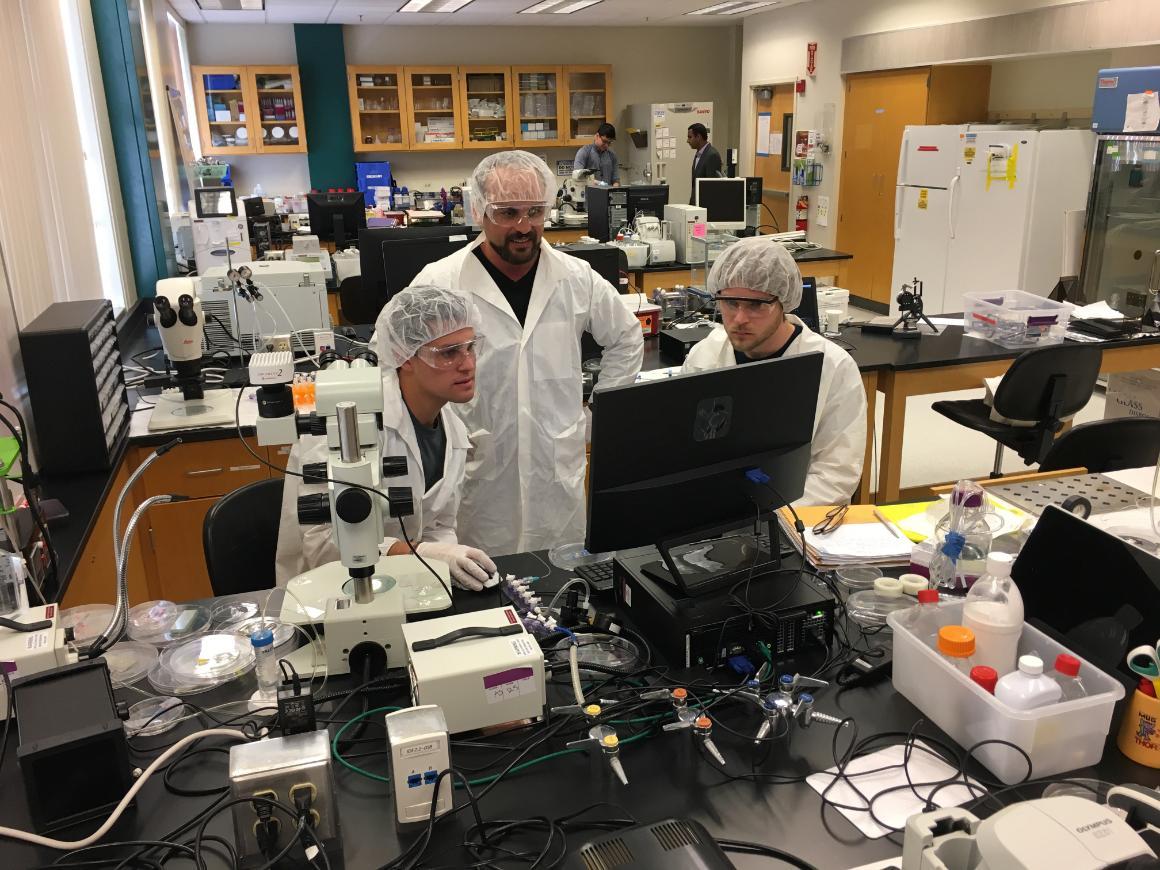O Pioneers!

To say the School of Engineering is undergoing landmark changes is definitely an understatement. In preparation for construction of the Sobrato Campus for Discovery and Innovation (SCDI), the new STEM complex on campus, nearly all engineering programs and faculty traded their long-time labs, classrooms, and offices for new digs in existing campus buildings. Some will remain there permanently, but others, like the Department of Bioengineering—which has moved to quarters adjacent to the Departments of Biology, Chemistry, and Physics—will make this home for just three years or so until they move into the SCDI.
But while the move may be only temporary, the experience will be forging new trails for these STEM pioneers. Zhiwen (Jonathan) Zhang, associate professor of bioengineering and department chair, sees the move as a golden opportunity to break free of department silos, test innovative methods of pedagogy and operation, and forge new interdisciplinary, interdepartmental, and external collaborations. “BioE is a microcosm of STEM at SCU, and right now we are working as a guinea pig to test systems and adjacencies that could be models for other units on campus. We’ve been warmly welcomed by biology, chemistry, and physics, our new neighbors, and now our students and faculty have access to a lot of instruments that were previously unavailable to us,” he said.
They’ll be sharing their own instruments more freely as well. “Previously, we had a traditional research setup of one lab for one professor,” Zhang explained. “Now all of our bioengineering professors are living under one roof for their research spaces. We have one big 2,000-square-foot faculty research lab with different benches. It’s highly interdisciplinary—ranging from bacterial cell engineering to gigantic bioreactor research, with the assorted dedicated electronic components now available to all. We’re changing the mindset of how we do our research. It’s definitely a challenge, but one we are willing to face. The aim of this transitional time is to test, to try, to experiment. It’s what we do naturally as engineers in our work, but it takes some adjustment to apply the same mindset programmatically.”
Zhang notes they are already seeing that new collaborations can be forged departmentally. “Before, most of the collaborations were generated on a personal level, through individual relationships. Now, we have a system where we are working more closely as a department and creating new avenues for partnerships.”
Other big changes are afoot, as well. Drawing support from Silicon Valley industry, the department has implemented new focus areas in translational bioengineering and BioAI.
Hang on; back up. Translational bioengineering? BioAI? Explain, please!
Applying the engineering theory and techniques learned in the classroom toward the development of products or therapies that address specific clinical problems is the milieu of translational bioengineering.
BioAI means many things: using machine learning for nearly instantaneous precision diagnosis, implementing augmented reality in the classroom to bring 2D concepts into 3D reality, and helping engineers design "smart" molecules, drugs, materials, or devices.
“We have an impressive lineup of industry partners supporting our translational bioengineering focus in biomolecular, biomaterial, and biodevice tracks,” said Zhang. “Amgen, Genentech, Bayer and others will support faculty and their students and will provide access to company resources and facilities for advanced research.” With 10 spots pledged and more than 50 companies interested, this collaboration reaps a triple win: faculty research advances, students increase their opportunities for career placement, and industry partners advance their R&D and gain potential new employees.
On the BioAI front, RealMax Qian recently gifted $100,000 worth of augmented reality headsets that will be integrated into SCU’s Wiegand Advanced Visualization Environment (WAVE) and used for bioengineering. The “computerless” headsets feature a wide field of vision to enhance learning. “These headsets make learning interactive,” said Zhang. “Students can be in the middle of a holographic molecule. They can design a house, a molecule, a biodevice using their bare hands. Our faculty will be developing usability for this technology in collaboration with Bay Area industry from various sectors. Industry research and center grants will support our bioengineering faculty-directed research.”
These are just a few of the ways the Department of Bioengineering continues to pioneer academic excellence in STEM. “The next few years will certainly bring more changes to our department,” Zhang said. “Sometimes change seems scary, but when you embrace it, the possibilities are endless.”